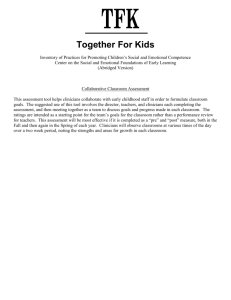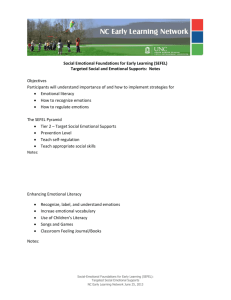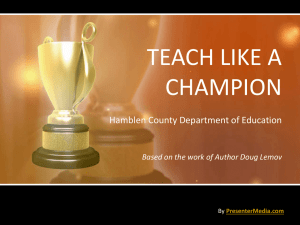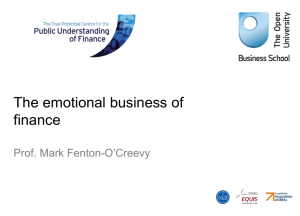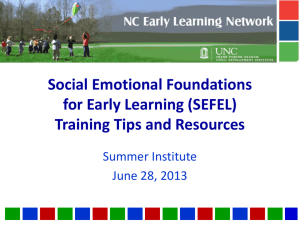SEFEL Classroom Self
advertisement
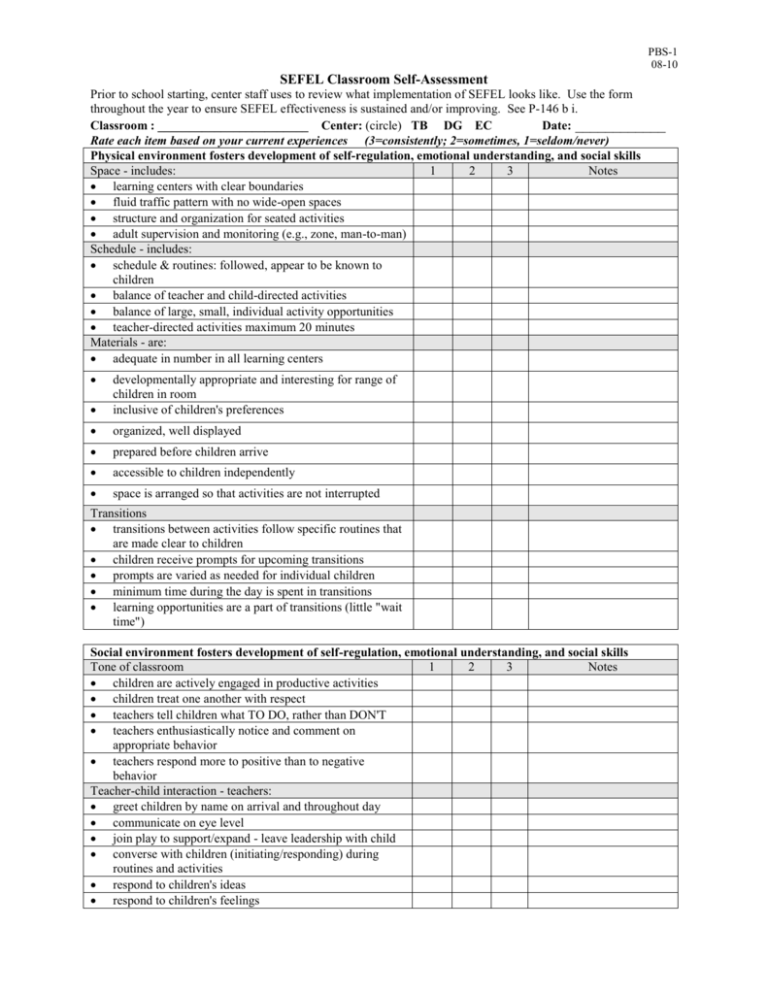
PBS-1 08-10 SEFEL Classroom Self-Assessment Prior to school starting, center staff uses to review what implementation of SEFEL looks like. Use the form throughout the year to ensure SEFEL effectiveness is sustained and/or improving. See P-146 b i. Classroom : ________________________ Center: (circle) TB DG EC Date: ____________ Rate each item based on your current experiences (3=consistently; 2=sometimes, 1=seldom/never) Physical environment fosters development of self-regulation, emotional understanding, and social skills Space - includes: 1 2 3 Notes learning centers with clear boundaries fluid traffic pattern with no wide-open spaces structure and organization for seated activities adult supervision and monitoring (e.g., zone, man-to-man) Schedule - includes: schedule & routines: followed, appear to be known to children balance of teacher and child-directed activities balance of large, small, individual activity opportunities teacher-directed activities maximum 20 minutes Materials - are: adequate in number in all learning centers developmentally appropriate and interesting for range of children in room inclusive of children's preferences organized, well displayed prepared before children arrive accessible to children independently space is arranged so that activities are not interrupted Transitions transitions between activities follow specific routines that are made clear to children children receive prompts for upcoming transitions prompts are varied as needed for individual children minimum time during the day is spent in transitions learning opportunities are a part of transitions (little "wait time") Social environment fosters development of self-regulation, emotional understanding, and social skills Tone of classroom 1 2 3 Notes children are actively engaged in productive activities children treat one another with respect teachers tell children what TO DO, rather than DON'T teachers enthusiastically notice and comment on appropriate behavior teachers respond more to positive than to negative behavior Teacher-child interaction - teachers: greet children by name on arrival and throughout day communicate on eye level join play to support/expand - leave leadership with child converse with children (initiating/responding) during routines and activities respond to children's ideas respond to children's feelings PBS-1 08-10 Giving directions - teachers: give directions in clear consistent manner individualize directions when needed for certain children check children's understanding of directions give choices and options when appropriate Learning environment teaches self-regulation, emotional understanding, and social skills Teaching self-regulation 1 2 3 rules are few in number and important (e.g., safety, respect) rules are clearly communicated to children rules are used to promote independence and selfregulation rules are stated using positive language rules are enforced consistently and fairly natural consequences are used for positive and negative behavior children are reinforced for following the rules teachers model emotion-regulation strategies Teaching emotional understanding children's emotions are validated - emotions are OK, but not all expressions are OK emotion signals (facial expressions, words) are described positive and negative feelings are acknowledged and labeled large/small group activities are used to talk about and teach children about emotions natural teaching opportunities are used to teach about emotions, emotional behavior, and acceptable ways to express emotions (own and others' emotions) Teaching positive behavior provide materials/activities that encourage cooperation and interaction provide opportunities for peer buddies monitor room/group and provide assistance or change activity when needed use descriptive language to notice what children are doing well teach strategies for initiating and responding to peers comment enthusiastically on positive peer interactions use peer models as examples teach strategies for problem solving and working together via large/small group activities use natural teaching opportunities to teach appropriate social behavior (e.g., problem solving) Notes
